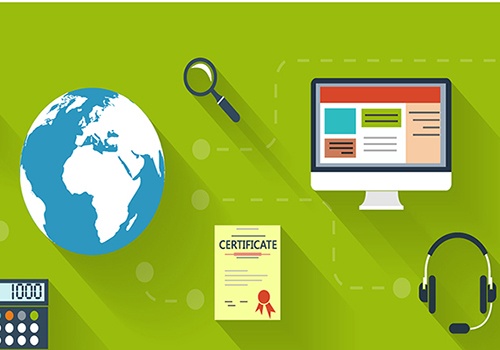Building A Business Case For A Modern Learning Management System
Like many companies today, you’ve probably outgrown your legacy Learning Management System. Maybe it can’t scale to meet your larger user numbers, or global audiences? Or maybe it’s too hard to use, or lacks modern features such as a great mobile app, integrations with other enterprise systems, or robust reporting and eCommerce tools?
FACT: Only 40% of LMS managers and administrators are happy with their Learning Management System’s ability to perform advanced capabilities. ─ Expertus Future State of the LMS report
Whatever your Learning Management System issues are, if you’re ready to move on, you need to build a solid business case for securing this major investment. This article provides a roadmap for demonstrating the significant value and rewards for securing a modern Learning Management System.
How To Get Started
Don’t make your decision to invest in a new Learning Management System harder than it has to be. Simplify the process by following these 5 steps:
1. Do Your Research
- Try to build your business case for a modern Learning Management System on common questions and solid data. This way you’re ready to handle any push back.
- Human capital is expensive. So, identify all of the ways you’re spending, or resourcing, to support learning. Also, look for ways that learning can impact your company’s operational efforts.
- Explain where your Learning Management System is currently and where you’d like it to go. Don’t be afraid to share what’s broken and map out a plan for the transition.
- See if your company has a business case template. If so, use it!
2. Get Help Early
It’s important to identify a project champion early to help secure funding and identify potential gaps between the business and learning. Your executive sponsor should also know how to work within the system to get projects like yours approved.
3. Establish A Team
Even if you don’t plan on doing the LMS implementation, you still need to build an internal team including IT, HR, and other business leaders.
4. Set A Reasonable Timeline
When creating your timeline, factor in how long your organization’s decision-making process is, when critical resources are available and other key factors such as demos, contracting, and implementation times.
5. Get, And Keep, Stakeholder Support
Throughout the project, continue to communicate with business leaders and stakeholders about the real needs (and benefits) of your Learning Management System investment. Make note of any changes and be proactive to prevent roadblocks.
What Questions To Ask
Your number one goal should be demonstrating how a modern Learning Management System can make every stakeholder and business group’s work easier. Develop supporting metrics that you can measure and do your due diligence by asking these questions:
- Why do you need a new Learning Management System? Have any previous implementations failed? Why?
- Why is your learning strategy not working? Will new a new Learning Management System fix this? Or is technology not the issue?
- What problems, pains, and inefficiencies do you want to fix?
- Who will get the most benefit from more personalized, meaningful training? (i.e. HR, senior leadership, sales, customer service/support, etc.) How?
- How will your Learning Management System investment support your company’s strategic business plan?
- What impact will it make on organizational goals, processes, metrics, etc.?
- Does your company have a process or require an RFP for purchasing software? Should you get IT involved?
- How can you prove ROI, and do you need to present your findings to executives?
A key subset of your due diligence is identifying how your learning investment with affect important stakeholders. Use these questions to better understand their business goals and training challenges, and how the LMS will address them:
- What are their quarterly/yearly strategic goals?
- What metrics do they use? How else would they like to use analytics?
- Are there any department synergies you can strengthen? (These will help support your business case and produce more meaningful back-end results.)
After you’ve gathered your data, use it to pinpoint how a modern Learning Management System will directly impact business challenges, growth, direction and opportunities.
How To Make Your Business Case
Since there are numerous ways a modern Learning Management System can lower costs and raise revenue, building your business case is not as hard as you may think. You just have to look at the investment as a strategic business decision/play versus a new technology purchase. Here 3 steps for guiding your success:
1. First And Foremost, Ease The Pain
Since you’re building your business case around your organization’s business strategy and priorities, talk about how the Learning Management System investment will support them first. If budgets are tight and a top concern, then talk up the cost-savings. For example, how the Learning Management System can: Lower travel costs; eliminate learning system redundancies and resource expenses; and lessen training’s waste by improving learning’s efficiency, adoption and engagement.
If your company is more focused on growing revenue versus budget, then you could show how the Learning Management System will: Speed learning content quality and delivery; make learning more accessible (mobile/global) and convenient (self-service); and shorten time-to-market cycles.
2. Don’t Sell Features, Sell Value
Instead of talking about the Learning Management System’s latest and greatest features, sell these features’ value to your stakeholders and business units. Use a “What’s in It for Me” angle. For example: Instead of saying “It has a great mobile app”, say “With a modern mobile app, learners can take training at the point of need, wherever they are. This will lead to better training adoption for a more productive workforce – or more training sales to customers and partners”. Or using compliance as an example… Instead of saying “It has an award-winning compliance tool”, say “It’s robust compliance program will greatly reduce our compliance fines and lawsuits and saves thousands of dollars in manual tracking”.
3. Speak Their Language – Numbers!
If you don’t speak the same language as the execs you’re trying to make your business case to, you’re probably going to fail. For them, it’s always about the numbers. So even if you show the Learning Management System’s value, you must show them the numbers too—i.e. demonstrate its monetary impact:
- Will the learning investment pay for itself in lower turnover and/or retraining costs?
- Or higher productivity or performance gains?
- Or reduced help desk calls and training-related traveling expenses?
- And so on…
Instead of engaging in philosophical discussions about learning’s value, win the hearts and minds of senior executives with the actual dollars and cents of the deal. Here’s a quick equation you can use:
Estimated Investment Gains – Hard Costs For The LMS = ROI
Note: For a free, detailed template to create a compelling 3-year ROI for a modern LMS, read this white paper: The Case for an LMS.
Areas you can reference for investment gains include: Revenue growth in customer and partner training, workforce productivity gains (faster production + better product quality = happier customers and larger sales) and salesforce productivity gains (better training = more loyalty and sales/revenue).
Invest In The Success Of Your Business Case For A Modern Learning Management System
Warning: Many LMS RFPs fail to execute. So, it’s worth your time to invest some time in building a strong business case. Because a Learning Management System is such a large purchase, negotiations with senior leaders can quickly unravel. The easiest way around this is to assuage their doubt as to the value of this critical investment. And don’t forget to get their buy-in early. A worst-case scenario is to spend half a year searching for the learning department’s definition of a “perfect” Learning Management System, only to fail to meet the executives’ needs, goals, and approval.
Instead, if you take the time to build a nuanced, well executed business case, you can secure a modern Learning Management System with the measurable ROI that positions learning as a driver of your company’s strategic goals.


![Outgrowing Your LMS? 5 Ways Modern Learning Is Rewriting The Rules Of The LMS [eBook Launch]](https://cdn.elearningindustry.com/wp-content/uploads/2022/11/Shutterstock_345947564-1.jpg)






